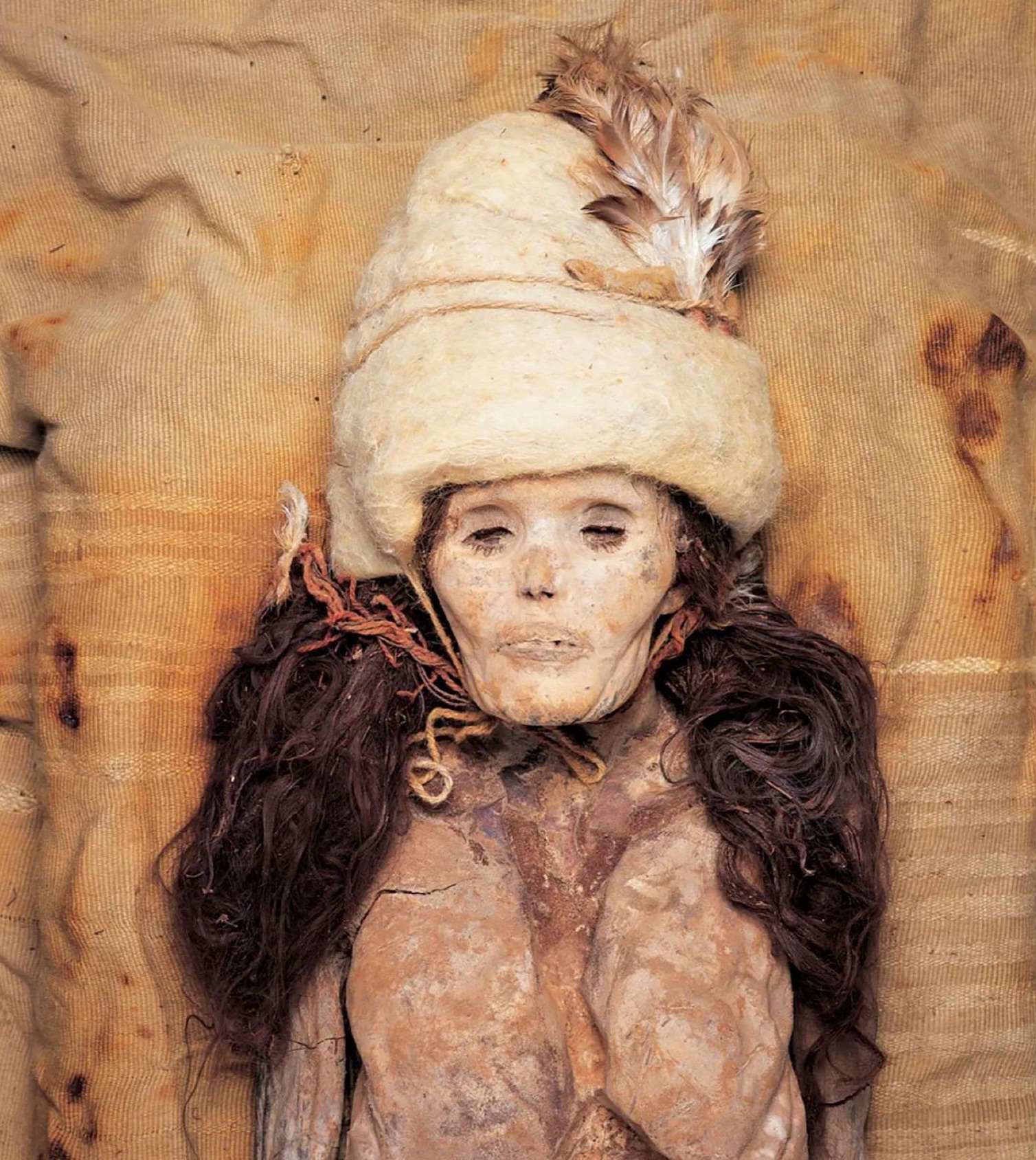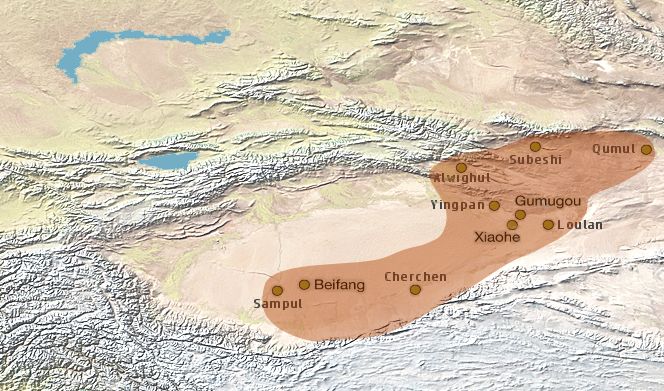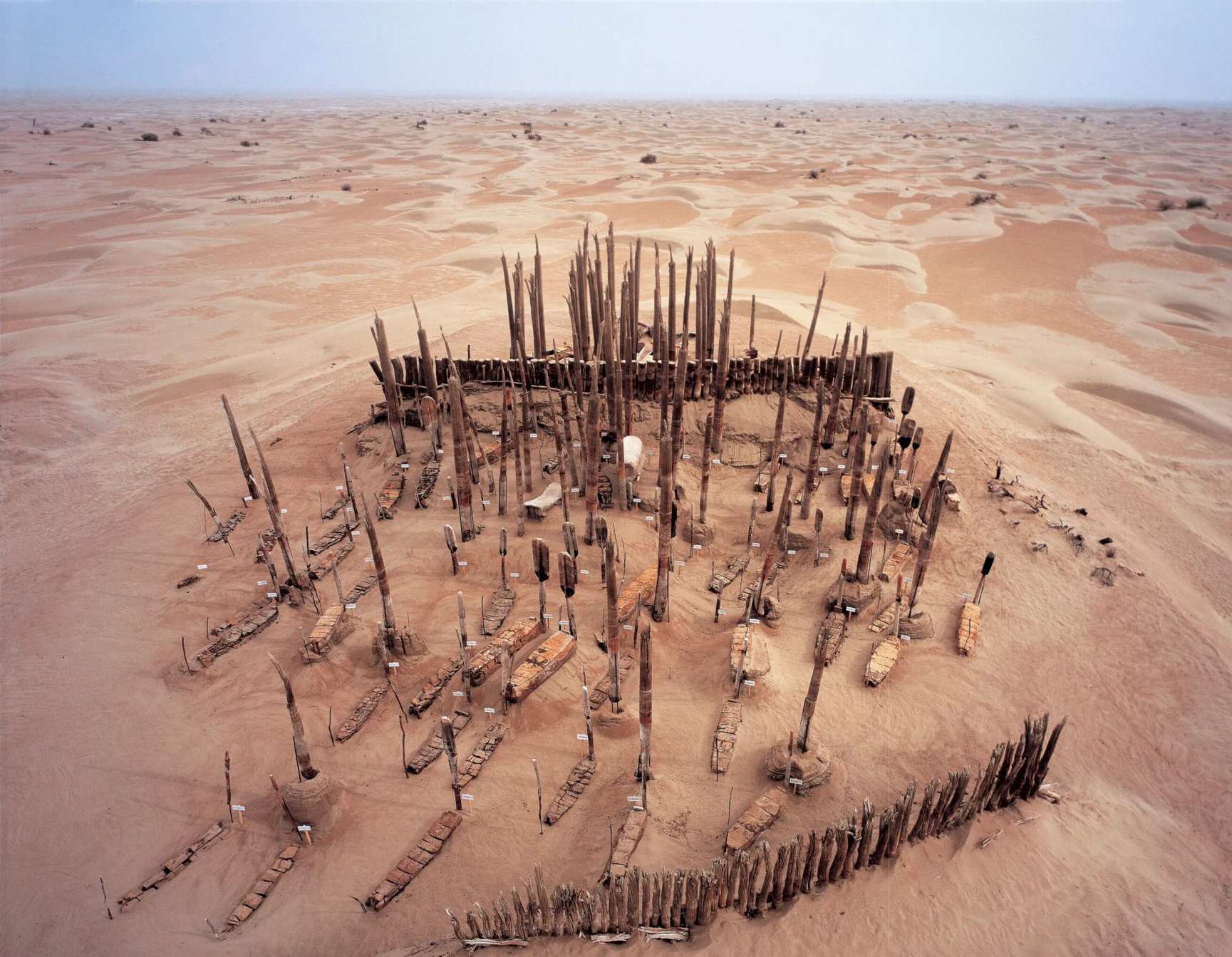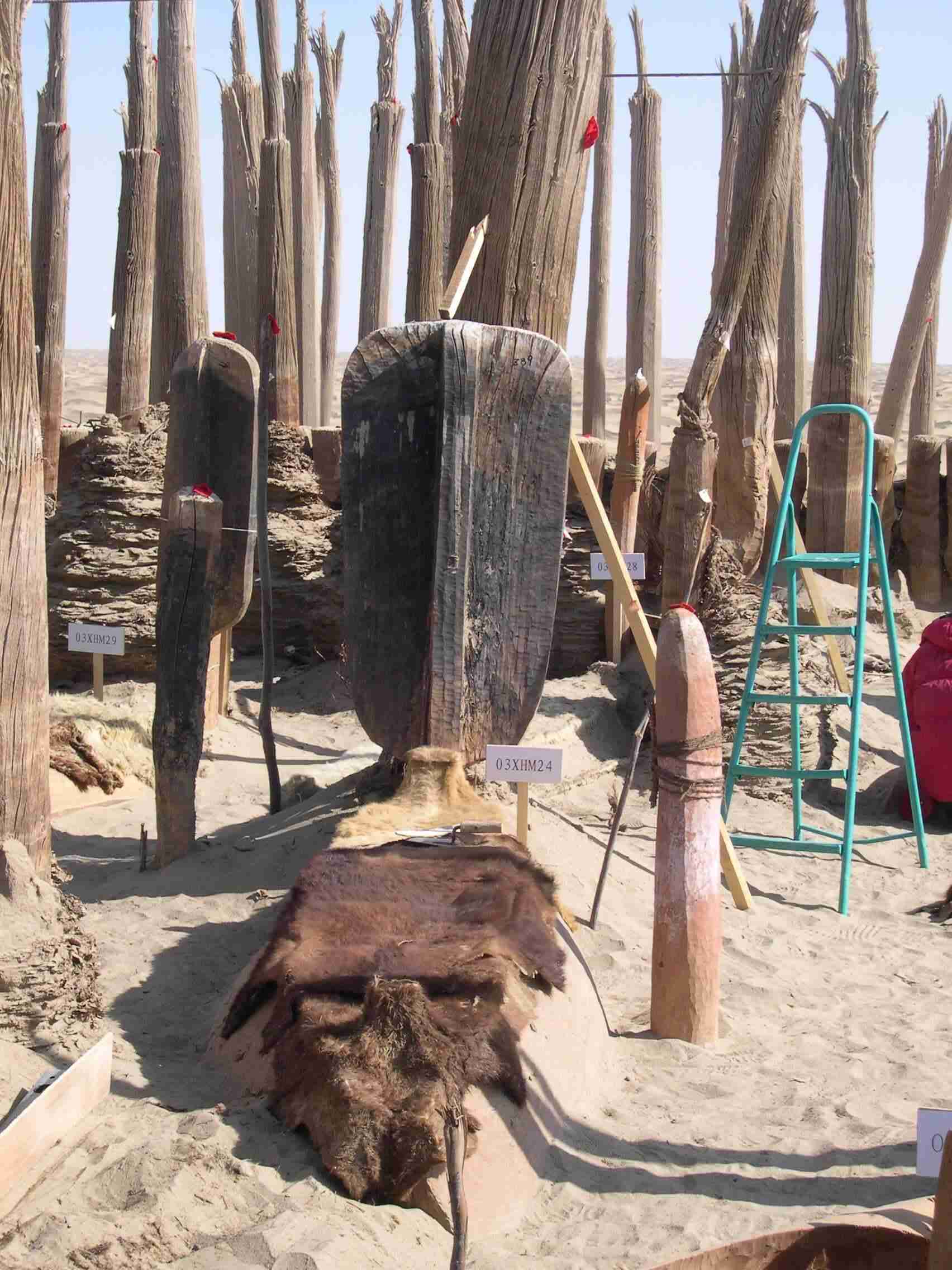In the vast desert of China’s Xinjiang Uyghur Autonomous Region lies a remarkable discovery that has perplexed scientists and historians for decades. The Tarim Basin mummies, dating back from 2,000 BCE to 300 CE, have long fascinated researchers with their intriguing combination of Western features and vibrant cultural artifacts. However, a new study has shed light on the unexpected origins of these ancient mummies, revolutionizing our understanding of human migration and cultural exchange.

The Tarim Basin mummies were initially noted for their physical appearance, which showcased distinctly European features. This observation was unexpected, as their burial location in the arid desert of Xinjiang seemed unfit for a population with such characteristics. The mummies were buried in boat-shaped coffins covered in cow hides, undoubtedly an unusual practice for a desert environment.
To unbury the mystery of the Tarim Basin mummies, scientists turned to genetics. Through the analysis of ancient DNA extracted from these mummies, researchers discovered a surprising ancestry. Contrary to earlier theories suggesting their foreign origin, the mummies were found to be direct descendants of the Ancient North Eurasians, a population that existed 10,000 years ago. This genetic lineage can still be traced in present-day populations inhabiting Siberia and the Americas.

The study’s findings indicate that the mummies possessed overwhelmingly local ancestry, dispelling the notion that they were newcomers to the region. Instead, they belonged to a distinctive cultural group that exhibited a blending of influences from West Asia, East Asia, and Central Asia. This is evident in their cuisine and the use of medicinal plants, which demonstrate the convergence of different cultural traditions.
More intriguingly, the mummies formed a genetic isolate, characterized by limited intermixing with nearby populations. This isolation was likely a result of an extreme genetic bottleneck, indicating a significant decrease in overall genetic diversity. The reasons behind this isolation remain unclear, leaving scientists puzzled about the circumstances that led to the formation of such a unique genetic group.
Interestingly, the neighboring Dzungarian Basin tells a different genetic story. Analysis of human remains in this area suggests that the mummies found in the Tarim Basin were descended from local populations and herders from the Western steppe. This contrast highlights the diverse genetic landscape of the region and further emphasizes the Tarim Basin’s role as a crucial crossroads between East, West, North, and South during the Bronze Age.

Aside from their genetic origin, the mummies also leave behind intriguing cultural artifacts that raise questions about their beliefs and societal norms. The burial site was adorned with abundant phallic and vulva symbols, indicating a certain cultural significance attached to fertility and reproduction. The presence of these symbols has sparked much speculation among researchers, as they attempt to unravel the ancient beliefs and practices of these enigmatic people.

Moving forward, further research will be conducted to explore the migration history of the Eurasian steppes using ancient human genomes. By delving into the genetic makeup of these ancient populations, scientists hope to shed more light on the intricate networks of human movement, cultural exchange, and genetic intermixing that have shaped our history.
The discovery of the Tarim Basin mummies and their unexpected genetic origin has challenged our assumptions about ancient civilizations and human migration. These ancient remnants bring us closer to understanding the complex and interconnected nature of human history, reminding us that the threads of our past extend far beyond the boundaries we have set. As researchers dig deeper into the mysteries of the past, we inch closer to unlocking the secrets that will enrich our understanding of humanity’s vibrant tapestry.
After reading about the discovery of the Tarim Basin mummies and their unexpected genetic origin, read about the origins of ancient Aryan mummies and the mysterious pyramids of China.




